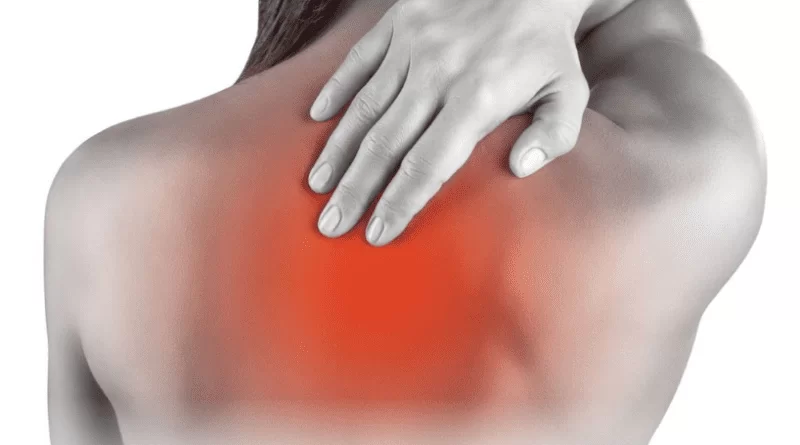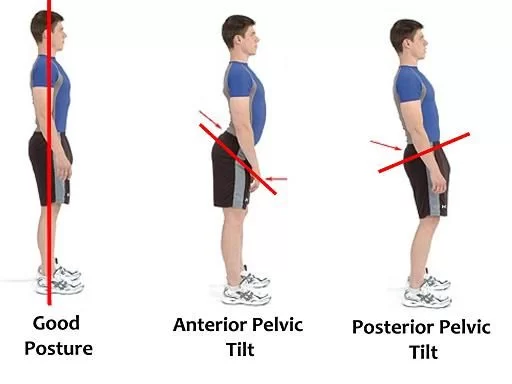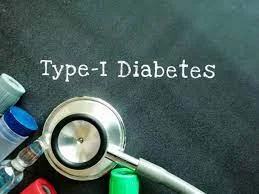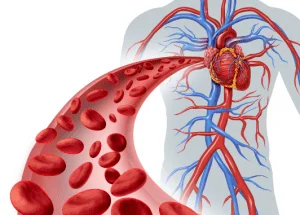Upper Back Pain
Table of Contents
What is an Upper Back Pain?
Upper back pain, often referred to as thoracic pain, encompasses discomfort or stiffness in the region between the base of the neck and the lower rib cage. Unlike the more commonly recognized lower back pain, upper back pain is less frequent but can significantly impact one’s daily life.
The upper back is a complex structure consisting of the thoracic spine, muscles, and associated ligaments, making it susceptible to various sources of discomfort.
Introduction
- Injuries, fractures, bad posture, disc problems, and other conditions like arthritis can all contribute to upper back pain. Most upper back pain sufferers may control their symptoms at home if they are just mildly to moderately painful.
- Upper back pain (and middle back pain) can occur anywhere between the base of your neck and the bottom of your rib cage. Your middle and upper back make up your thoracic spine. Your thoracic spine has 12 little bones, or vertebrae. Vertebrae comprise your
spine. - Each vertebra on your thoracic spine is connected to a pair of ribs. Your sternum is a long, flat bone that runs down the center of your chest and is reached by your ribs as they wrap around your body. This is what makes up your rib cage.
- Additionally, each vertebra in your upper back is separated by discs. As you move, these discs cushion the impact. There are several ligaments and muscles in your upper back that support and stabilize your spine. Numerous medical conditions or injuries to the upper back’s muscles, ligaments, discs, and bones can result in upper back discomfort.
- Compared to neck or lower back pain, upper back pain is less frequent. This is due to the fact that your upper back’s bones don’t move or flex as much as your neck’s and lower back’s bones do. Your upper back’s bones and ribs collaborate to support your back. They work together to protect your body’s vital organs, such as your heart and lungs.
One of the two causes listed below is usually to blame if the upper back starts to hurt:
- Inflammation of the muscles: The scapula (shoulder blade) and the rear of the rib cage are connected to the shoulder girdle by bulky muscles. These broad upper back muscles are prone to become strained or tight, which can be uncomfortable and challenging to treat. Usually, either deconditioning (loss of strength) or overuse injuries (such as repetitive actions) cause muscular soreness in the upper back.
- Joint disorder: The thoracic spine’s joints can deteriorate and become uncomfortable owing to acute injury or aging-related spontaneous deterioration. A torn joint capsule or the cartilage of a facet joint are two examples.
- When upper back pain is severe enough to restrict activities, it typically manifests as a single, intense site of pain or as a general achiness that flares up and may radiate to the shoulder, neck, or other areas.
Causes of Upper Back Pain
The most common cause of discomfort in the upper back is an injury that causes muscle irritability or joint dysfunction.
Common reasons for upper back pain are
- Accident: Damage to the spine’s discs, muscles, ligaments, nerves, or other soft tissues might result from a fall or sports accident.
- Degeneration of the vertebrae: The strains placed on the spine’s supporting muscles and ligaments, as well as the results of aging, can result in vertebrae starting to degenerate.
- Disc herniation: The cushioning substance may push out between the vertebrae and stress the spinal nerves when the region around the disc is injured. The upper back can also experience this, albeit the lower back is where it happens more frequently.
- Incorrect lifting methods: Without maintaining proper spinal alignment, lifting a big object might place unnecessary strain on the upper back. Lifting or carrying a heavy object above the head, particularly to the left or right rather than the shoulder and upper back, is particularly risky.
- Deconditioning of muscles: Similar to how exercising may help condition and develop muscles, improper use of muscles over time can cause them to become unconditioned. Pain might develop over time as muscles weaken.
- Overuse of muscles: Usually, performing the same actions repeatedly over time can irritate and strain muscles. A well-known illustration is a baseball pitcher who experiences shoulder soreness since they make the same actions with each delivery. Muscle strains, ligament sprains, and inflammation in the upper back are all brought on by strenuous activities.
- The syndrome of myofascial pain: This persistent (or “chronic”) pain problem is frequently brought on by repeated muscular contractions. Back connective tissue issues may be the cause of the discomfort. It may be brought on by one’s employment or by engaging in any repetitive motion-requiring activity.
- Obesity: Weight gain puts strain on the discs and increases stress on the spine.
- Osteoarthritis: Sometimes an issue with the bones or joints, rather than the muscles, is the cause of back discomfort. Osteoarthritis, a condition in which the cartilage that shields the bones deteriorates can cause discomfort.
- A pinched nerve: Numbness and discomfort in the arms and legs, or even a loss of control in the legs, might result from a herniated disc that slips and presses on a neighboring nerve.
- Improper posture: The back and neck might undergo structural changes as a result of a sedentary lifestyle or regularly sitting for extended periods of time with bad posture. The muscles can no longer maintain the spine’s normal alignment as they deteriorate in strength and condition.
- Strains and sprains: Back strains and sprains are the most frequent causes of discomfort in the upper back. Your muscles, tendons, or ligaments might get hurt if you lift anything too heavy or incorrectly.
- Fractures: The bones of the spine may break in an incident like a car accident or a fall.
Symptoms of Upper Back Pain
- There are several ways in which upper back pain can be expressed by different people. Some individuals compare upper back discomfort to
- Tightness
- A scorching or sharp sensation.
- A throbbing, achy discomfort.
- Stiffness or muscle tension.
- An ache that travels down a nerve.
- Numbness, tingling, or weakness.
- Burning sensation
Diagnosis
Typically, all that is required to diagnose back discomfort is a physical examination. Your doctor may check your: during the physical examination.
- Ability to walk and stand
- Reflexes that control the mobility of the spine
- Leg power awareness of leg sensations
- Your doctor could request more testing if a serious problem is detected, such as a dependable source:
- Blood: Checking for underlying diseases using blood and urine tests
- X-ray: X-rays of the spine to demonstrate bone alignment and check for cracks
- MRI: Your discs, muscles, ligaments, nerves, and blood vessels can be evaluated with a CT scan or MRI.
- EMG(Electromyogram): A bone scan to check for anomalies in the bone tissue an electromyogram (EMG) to assess nerve signals
Treatment of Upper Back Pain
- Depending on the underlying cause of the disease, upper back pain may require different treatments. The precise source of pain within the body can occasionally be difficult to pinpoint, even in situations when the cause may appear evident, like a fall injury
- The purpose of therapy is to assist the patient in managing their pain, enhancing their mobility, and enhancing their general quality of life.
- Most individuals can safely try to treat their own upper back discomfort if it arises without showing any indicators of an emergency. Rest, correcting posture, or using heat or ice are a few self-care options. Other therapies, such as medicine, physical therapy, or manual manipulation, can be required if the pain doesn’t go away. Sometimes the greatest way to aid with pain relief is to combine one or more therapies.
Self-Care
When upper back pain first appears, consider any of the following early treatments:
- R (Rest): the first step involves rest. more activities cause more pain and inflammation if your muscles are inflamed or irritated. Rest the injured area for at least two days and avoid lifting heavy items.
- I (Ice): Apply an ice pack on the painful area to reduce swelling and muscle pain.
- C(Compression): you can also use a compression band on painful areas to reduce the swelling. when it is done right, doesn’t slow blood flow,
It raises it so that nutrients and oxygen can reach the injured tissues more quickly, hastening the healing process. - E(Elevation): Elevation, use a gentle pillow while sleeping.
- OTC drugs, or over-the-counter medicines. Without a prescription, a number of painkillers are accessible. The majority of these over-the-counter medicines function by lessening bodily inflammation or blocking pain signals from reaching the brain. OTC drugs don’t need a prescription, but it’s still vital to read and follow the instructions on the label to prevent dangerous adverse effects.
- Heat or cold treatment. Within the first few days after the pain starts, ice may be administered to minimize swelling. Usually, after the first 48 hours, heat is advised. The patient should, however, select the one that offers the most comfort. No matter the desired temperature, it’s critical to keep treatments to 20 minutes at a time and examine the skin frequently to prevent tissue damage.
- Massage. Many people discover that getting a massage may help them feel better.Even if the effects of a good massage are simply temporary changes in activity and relaxation, it can still assist to relax tight muscles and enhance blood flow to the hurting area. A day or two of rest may be beneficial if specific movements or activities make the discomfort worse. After a little time of recuperation, make an effort to get moving again. Overly prolonged resting can weaken the back muscles, which can exacerbate discomfort.
Developing a treatment plan for upper back pain may require the assistance of a medical practitioner if the pain has persisted or has not improved with rest and other self-care measures.
Nonsurgical Treatment
The following are a few of the most typical medicinal remedies for upper back pain:
- Aerobic activity: Stretching and flexing exercises, if approved by the physician, can aid with pain management as well as general fitness and strength.
- Biofeedback: a method that increases awareness of typically unconscious bodily functions (such as tension in the muscles) in order to give the patient some degree of conscious control over them. The awareness might aid with pain relief and relaxation.
- Corsets or braces: A brace or corset can assist in reducing the discomfort and muscular stress brought on by spinal curvatures such as scoliosis, kyphosis, and other spine curvatures.
- Physical treatment: A physical therapy plan can be created by a doctor or other medical expert to suit a patient’s individual requirements. The majority of physical therapy regimens for upper back pain emphasize muscular strengthening and stretching.
- Prescription drugs for pain: Short-term prescription drug use may be indicated for extreme flare-ups of painful conditions or incapacitating discomfort. Common painkillers block the transmission of pain signals to the brain, whereas muscle relaxants often act as sedatives for the neuromuscular system.
- Injections: Stop spinal pain, there are several spinal injection methods. An epidural steroid injection, for instance, often administers a steroid drug in or close to the pain site to relieve discomfort. Facet injections and medial branch blocks work by injecting drugs into the spine’s joints to stop pain signals from reaching the brain. Although they can offer some short-term comfort, injections are not thought to be a good long-term option.
- Infusion treatment: the injection of painkillers by a catheter or needle into the treatment region. When used for pain treatment, a specialized infusion pump distributes the drug at a slower rate than an injection.
- Block of nerves: the intentional blocking of pain signals as they pass down a nerve via the injection of a drug that inhibits signals from a particular nerve.
- Nerve blocks and ablation in the periphery: Pain is frequently caused by peripheral nerves, which branch off from the spinal cord. The nerves can be inhibited and subsequently eliminated (ablated) with a local anesthetic.
- CBT, or cognitive-behavioral treatment: is a form of psychotherapy that aids in the management of pain by assisting patients in understanding their thoughts and feelings. A therapist can show you techniques for focusing on joy rather than suffering.
- Electrotherapy: By applying brief electrical pulses to the affected location, several electrotherapy procedures can help reduce pain. Transcutaneous electrical nerve stimulator (TENS) electrotherapy is the most popular kind. The electrodes are generally applied to the skin by the device using tiny adhesive pads. The electrodes get a modest electrical current from the TENS unit, which produces a calming, tingling feeling and lessens the impression of pain.
- In most cases, many treatments are required to help control upper back discomfort. To manage continuous chronic pain, for instance, drugs could be necessary initially, but over time, they might be gradually phased out in favor of physical therapy or other therapies.
Minimally Invasive Treatments
- Open surgery is more intrusive than minimally invasive techniques for treating upper back pain, but they are also quite successful at treating severe pain. Unlike surgery, minimally invasive techniques usually have a smaller incision, which results in less discomfort and a faster recovery time. Several of the therapies consist of:
- (Disc Denervation) Radiofrequency Ablation. Through this technique, the brain is prevented from receiving pain coming from a damaged spinal disc. The method involves electrical stimulation and the application of extremely high heat to eliminate aberrant tissue.
- SCS: spinal cord stimulation. By sending weak electrical signals to the brain’s and spinal cord’s processing centers, an implanted electrical device reduces the sense of pain.
- Vertebroplasty and Kyphoplasty. An inflated balloon is injected to raise and restore a shattered vertebra to a more natural position, a procedure known as kyphoplasty. A bonding substance is injected into a cracked vertebra during vertebroplasty, and it hardens to stabilize and strengthen compressed vertebrae.
Alternative Medicine
- Alternative therapies, often known as complementary and alternative medicine, can occasionally aid with pain relief. Many people who suffer from pain report feeling at least some pain alleviation from therapies like:
- Manipulating by hand: Spinal adjustments are performed by a certified medical expert, such as a chiropractor, physiatrist, or other. Manual manipulation, commonly referred to as chiropractic manipulation, aids in releasing stiff or out-of-place joints and could lessen discomfort.
- Acupuncture: The placement of tiny needles in precise bodily regions by an acupuncturist, depending on the exact pain complaints, is thought to change energy flows and lessen pain.
- Mindfulness training: a strategy that incorporates yoga, learning breathing exercises, and meditation. According to one study, mindful meditation can help patients better manage their chronic back pain on par with cognitive behavioral therapy.
Surgery
- Surgery is seldom used to address upper back discomfort. Due to the near proximity of multiple important organs and the need to maneuver around the rib cage, operating on the thoracic spine is challenging. However, surgery could be advised if one or more of the following conditions are met:
- Both the spinal cord and the nerve roots are in danger.
- Significant spinal deformity either already exists or is expected to do so.
- Nonsurgical pain management techniques are ineffective for debilitating pain.
PhysiotherapyManagement
Electrotherapy
- SWD(Short Wave Diathermy): SWD can effectively relieve back pain.
- IFT (Interferential Therapy) is a non-invasive physical therapy for pain relief and tissue repair.
Dynamic neck, shoulder, and upper back stretches
Perform a few of the following exercises for 30 to 1 minute each before starting your workout.
Neck roll
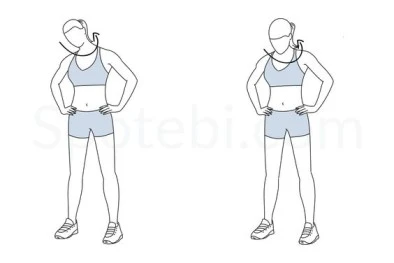
- Good for the upper back and neck
- With your back to the front, whether you’re seated or standing. Start by craning your neck to the right. Your neck and trap muscles should both feel stretched.
- After a little interval, slowly turn your head the opposite way.
- When you get to your left shoulder, stop for a little while.
- End the rotation by returning to your starting point.
- Repeat these motions in a clockwise direction.
- Repeat this series two or three times.
Shoulder roll
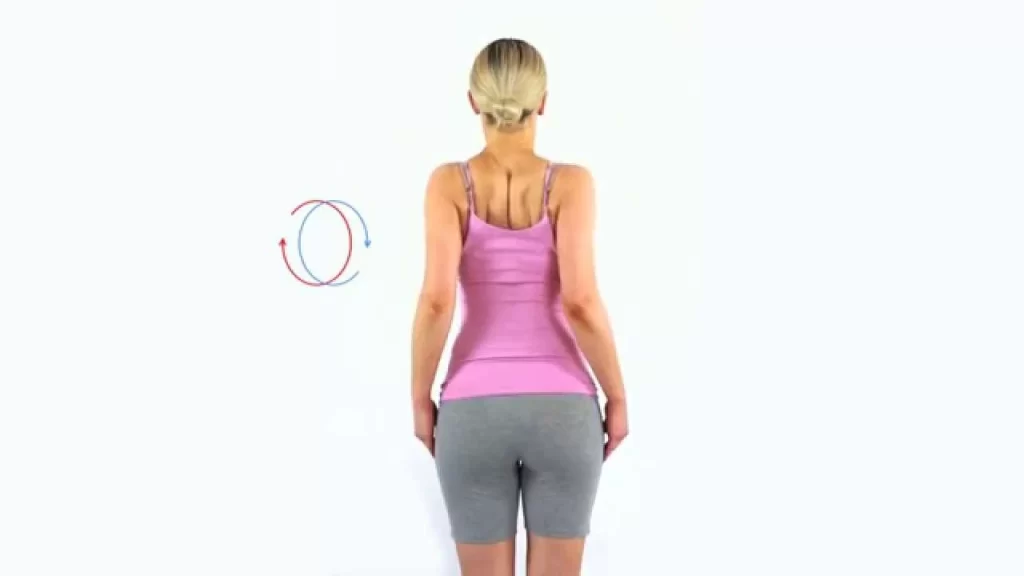
- Good for the upper back and shoulders
- While standing, keep your arms by your sides.
- Do five full rotations of rolling your shoulders backward in a circular manner. then make 5 forward revolutions.
- Repeat this series two or three times.
Arm circles
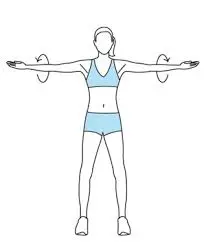
- Beneficial for: shoulders
- As you stand, extend your arms out to the sides, parallel to the ground, palms down.
- Circulate your arms forward slowly, starting with little circles and working up to bigger ones. Execute this 20 times.
- Reverse the motion, then make 20 more circles.
Overhead arm reach
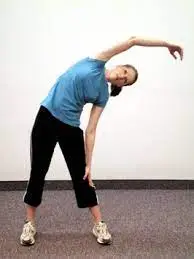
- Good for the upper back and shoulders
- Place your feet on the floor and saunter into a chair.
- Raise your right arm over your head while extending your left arm. Bend your body when your right lat and shoulder start to feel stretched.
- Go back to the beginning place. Follow the same procedure with your left arm after five repetitions.
Chair rotation

- Benefits the upper, middle, and lower back
- Lie back on a chair. The back of the chair should be against your right side.
- In order to reach the chair’s back, turn your body to the right while keeping your legs straight.
- Keep twisting your upper body as your muscles relax and extend your arms more and farther.
- Ten seconds of holding. On each side, repeat three times.
Cat-Cow
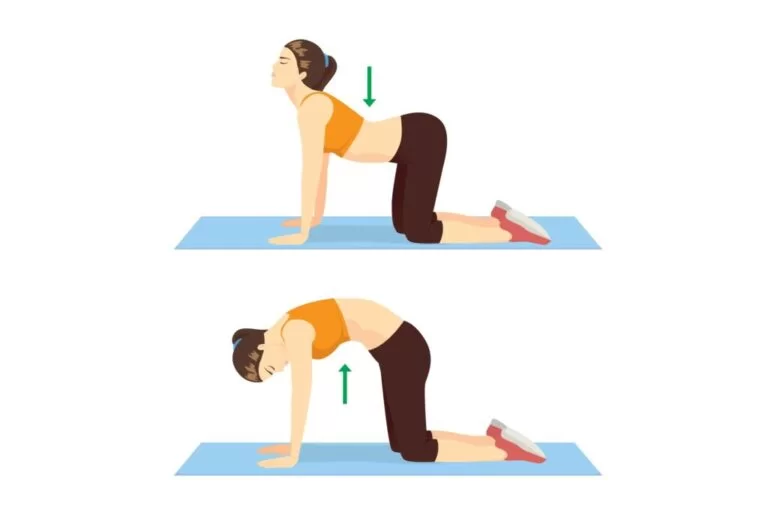
- Ideal for: the middle and lower back
- Start with your neck neutral and all fours.
- Your shoulders and hips should be in line with your palms and knees, respectively.
- Put your pelvis in a tuck and your midback in a circular shape as you inhale. To relax your neck, bring your navel closer to your spine and droop your head.
- Exhale and come back to a neutral spine posture after 3 to 5 seconds.
- Your back should fall towards the floor as you raise your face to the heavens. 3 to 5 seconds of holding.
- Five times through this pattern.
Knee to the chest
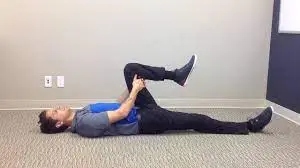
- Benefits: lower back
- On the ground, lie faceup. Bring your left leg up to your chest while bending it. Release after five seconds of holding.
- Continue by using your right leg.
- Three times through this sequence.
Thoracic extension
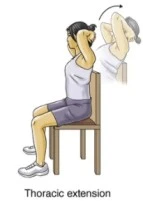
- Benefits: upper and middle back
- You’ll need a chair or a foam roller for the finest outcomes.
- Put a foam roller beneath your thoracic spine if you’re using one. Your head and glutes are free to sag to any side. To deepen the stretch, raise your arms in front of your head.
- If using a chair, position yourself such that your upper body hangs over the back of the seat. Stretch more deeply by raising your arms above your head.
- Release after five seconds of holding either position. Repeat three times.
Strengthening exercises
- Your back, shoulders, and neck muscles must be strengthened if you want to lessen and/or avoid discomfort. To attack them, pick a few of the moves listed below.
- Some of these workouts involve dumbbells or resistance bands, while others just use your body weight. Pick a combination of the two sorts if you can.
Row
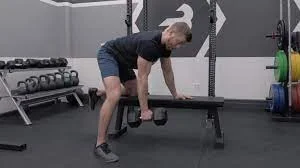
- Good for: upper back
- To do this technique, you can use a resistance band or a light to the medium dumbbell.
- Attach the resistance band to a pole or other sturdy object, then stretch your arms and grasp each handle.
- By bending your elbows and keeping them close to your body, pull the handles straight back. Your lats ought to be active.
- Hold the dumbbell in your right hand if you’re using one, then support yourself against a wall with your left hand and extended arm.
- Adjust your waist hinge to a 45-degree angle and let the dumbbell dangle down.
- Pull the dumbbell directly up with your elbow tucked in while maintaining a neutral neck and soft knees.
- 2-4 sets of 8–12 repetitions should be done.
Face pull
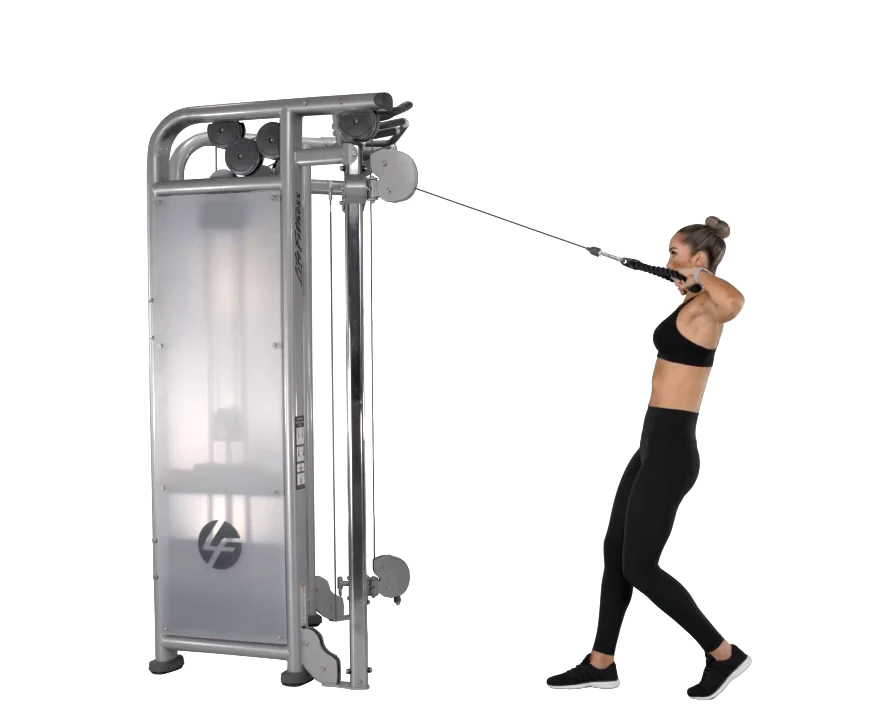
- Good for the upper back and shoulders
- To perform this exercise, use a resistance band.
- Put the band on a solid surface above your eye level. Maintain an overhand grip on each handle.
- Straighten your upper arms out to the sides and squeeze your shoulders together as you pull towards your face. pause, then come back to the starting point.
- Finish three sets of 12 repetitions.
Scapular squeeze
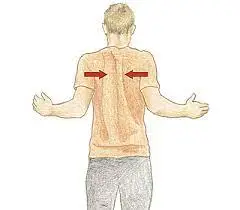
- Good for the upper back and shoulders
- Push your shoulder blades together as you stand with your arms at your sides. Release after five seconds of holding.
- Repeat three to five times.
Wall angel
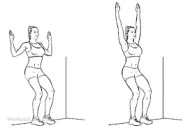
- Good for the upper back, shoulders, and neck.
- As you stand, lean flat against a wall. You might need to take a tiny step back with your feet in order to fully soften your back against the wall.
- Form a “T” with your hands in front of you, and then bend your elbows at a 90-degree angle.
- Maintaining a flat surface against the wall the entire time, slowly raise and lower your arms in a “snow angel” motion.
- Go back to the beginning position once your fingertips hit the ceiling above your head.
- Complete three 10-rep sets.
Reverse dumbbell fly
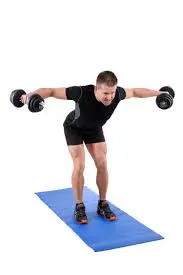
- Good for the upper back and shoulders
- Holding two small dumbbells in each hand, stand with your arms hanging straight down and your waist slightly bowed.
- Lift your arms out to the sides and up while maintaining a neutral neck and a downward look.
- At the peak of the action, tense your shoulders.
- Finish 3 sets of 8–12 repetitions.
Lat pulldown
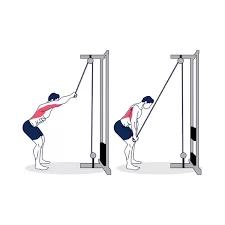
- Good for the upper back and shoulders
- Sit or stand with the resistance band attached to a stable surface overhead.
- Pull down on the band once your upper arms are parallel to the floor.
- Pause at the bottom and tighten your lats, then go back to the starting position.
- Finish 3 sets of 8–12 repetitions.
Superman

- Ideal for: the middle and lower back
- Your arms should be raised over your head while you lay on your stomach.
- Lift your arms and legs simultaneously off the ground while maintaining a neutral neck position. Be careful to raise using your back and glutes.
- At the peak, pause for a little moment before going back to the beginning.
- Perform three sets of ten repetitions of the Superman exercise.
Static stretches
Pec stretch
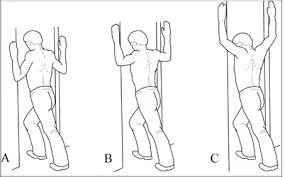
- Good for shoulder and chest
- For this portion, a doorway is required.
- Put your forearms on the doorframe as you enter the entryway. Ensure that the angle of your elbows is 90 degrees.
- Allow your body to sag a little forward so that your chest and shoulders may expand.
- Release after holding for ten seconds. Repeat three times.
Child’s Pose

- Beneficial for the shoulders, the upper, middle, and lower back
- Begin on all fours on the ground.
- Sit your glutes back onto your feet with your knees as far apart as possible and your big toes touching.
- Arms raised over your head while you sit upright.
- Hinge at the waist and lower your upper body between your legs as you exhale the next time.
- Permit your shoulders to open up, your forehead to contact the ground, and your glutes to drop back.
- Hold for a minimum of 15 seconds.
Butterfly
- Good for the upper back and shoulders
- Along with touching elbows, place your palms on the opposing shoulders.
- After holding for ten to twenty seconds, let go.
- 3–5 more times, repeat.
Upper trapezius stretch
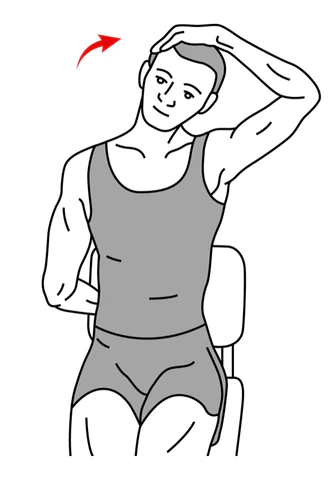
- Beneficial for: the upper back and neck
- While comfortably seated or standing, put your right hand on the back of your head. Take your left hand and place it behind your back.
- Your right hand should be used to pull your head towards your right shoulder.
- Hold for ten to fifteen seconds.
- On the opposite side, repeat.
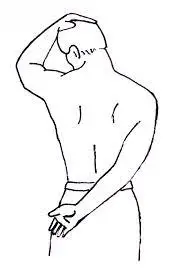
- Good for the upper back and neck
- When you’re sitting in a chair or standing erect, tilt your neck 45 degrees to the left.
- As you look into a shirt pocket, crook your neck downward. For a longer stretch, use your left hand.
- Hold for ten to fifteen seconds.
- On the opposite side, repeat.
Prevention
- Even while it might not be feasible to stop all causes of upper back discomfort, there are some simple actions you can do to perhaps stop some of the most prevalent ones. These consist of:
- To keep your muscles flexible and strong, take regular pauses from sitting or lying down to stretch and exercise different muscle groups.
- Before engaging in any activity, spend a few minutes warming up the body or stretching the muscles.
- Lifting large goods without twisting or using the back is advised.
- To assist in relieving muscle stress, get frequent massages.
- With the help of a physical therapist, strengthen your weak muscles and relieve stress on your joints.
- Avoid carrying large handbags or backpacks.
- Always be mindful of your posture; stand or sit up straight, and utilize back supports as required.
Modifying Your Lifestyle to Decrease Upper Back Pain
- Back discomfort is known to be made more likely by a few everyday risk factors. Lowering your chances of acquiring upper back discomfort by implementing one or more of the following lifestyle changes:
- Exercise and keep moving. To keep the upper back in excellent shape, go on frequent walks or hikes, take part in noncontact activities, strength train, and stretch. Do balance-enhancing exercises
- Improve your posture. To put the least amount of strain on the neck and back when standing, keep the head in a neutral posture with the ears exactly above the shoulders. Throughout the day, maintaining excellent posture might lower your chance of experiencing pain.
- Use proper lifting procedures. Take light lifting. When lifting anything, maintain your back straight, bend your legs, and then raise it slowly using your legs.
- Give up smoking. Smokers are more likely to experience persistent back pain and faster spinal disc degeneration, according to many studies. The restriction of blood flow caused by smoking, which might lessen the delivery of nutrients to the discs, is one of the most likely causes.
- Maintain a healthy weight. Increased stress and disc pressure are caused by excess weight on the spine.
- Be less stressed. The body responds to stress by releasing cortisol, sometimes known as the “stress hormone.” A decrease in bone density can happen when cortisol levels are increased for long periods of time.
- Eat healthfully. A good source of calcium and vitamin D should be present in your diet. Strong bones and muscles require adequate vitamin D.
- Without vitamin D, our bodies are unable to properly absorb calcium, which is crucial for strong bones.
- Get adequate rest. Getting enough sleep can lower the chance of getting back pain and aid with stress management. Insufficient sleep also has an impact on bone marrow formation, which reduces bone flexibility.
Risk factors
- Anyone can have back pain because it is a frequent occurrence. However, there are a few risk factors that might make your chronic back pain or upper right back discomfort more frequent. These comprise:
- Your back may experience extra pressure if you are obese or overweight.
- Lack of exercise can lead to weak or inadequate muscle tone in the back and abdomen as people age (back pain gets worse as people age).
- Sadness or persistent stress
- Incorrect lifting, repeated motions, and bad posture (desk employment can also be a risk factor)
- Smoking decreases blood flow to the spine and delays damage recovery time.
Home advice
- Exercise at home can help your upper back muscles stretch and get stronger.
- Good posture Sit and stand tall. Don’t hunch over or slouch.
- Reduce tension: Try deep breathing, meditation, or relaxation techniques.
Summary
- Anywhere between the base of the neck and the bottom of the rib cage might experience upper back discomfort. Injuries, fractures, bad posture, disc problems, and other conditions like arthritis can all contribute to upper back discomfort. The majority of individuals with mild to moderate upper back pain may manage their symptoms at home.
FAQs
Upper back pain, also known as middle back pain, may occur anywhere between the base of your neck and the bottom of your rib cage. Your middle and upper back are referred to as the thoracic spine. There are 12 little bones, or vertebrae, that make up your thoracic spine.
Back pain is quite prevalent, however upper back pain is less frequent than lower back pain. The reason for this is that the bones in your upper and middle back are linked to your ribcage and are thus less movable than those in your neck or lower back.
The purpose of therapy for upper back discomfort is to reduce pain, cure the underlying cause, and, if feasible, stop future damage or re-injury. With the help of over-the-counter anti-inflammatory medications, stretching, hot and cold therapy, massage, and other treatments, many instances of upper back pain resolve on their own in a matter of weeks
Chronic stress may cause inflammation to develop throughout the body, particularly in the back, which can be painful. Poor posture: When you’re anxious, your breathing habits shift and your shoulders hunch up, which can cause strain and tension in your upper and middle back.
Consider placing a cushion between or beneath your legs as you sleep for more support. Put the pillow between your knees and gently raise them towards your chest if you like to sleep on your side. If you want to sleep on your back, try putting a cushion between your knees or rolling up a small towel and putting it under the small of your back.
References
- Professional, C. C. M. (n.d.). Upper Back Pain. Cleveland Clinic. https://my.clevelandclinic.org/health/symptoms/22866-upper-back-pain
- Sellers, J. T. (n.d.). All About Upper Back Pain. Spine-health. https://www.spine-health.com/conditions/upper-back-pain/all-about-upper-back-pain

